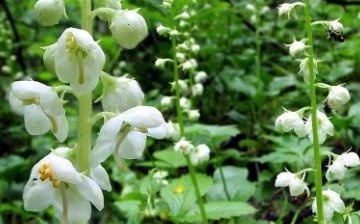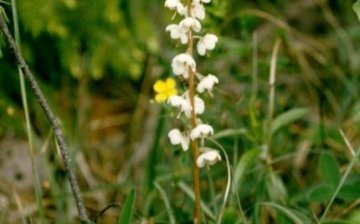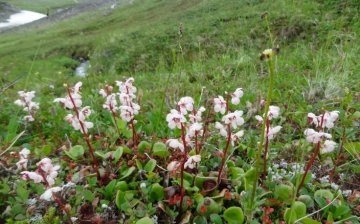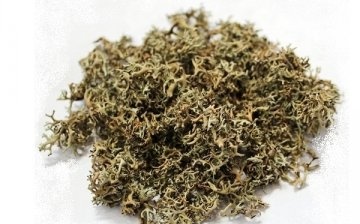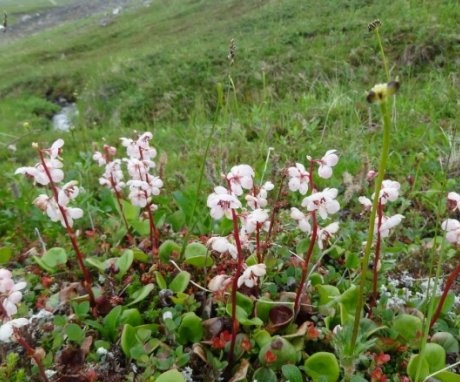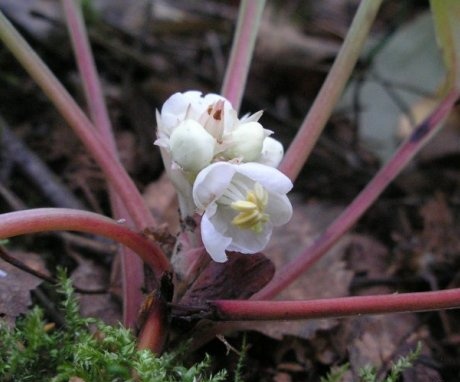Wintergreen herb: characteristics, agricultural technology and properties
Grushanka is a perennial that belongs to the Grushankov family. The properties of the wintergreen are of great importance in medicine, and are being studied by scientists at the present time.
Content:
- General information about wintergreen herb
- Types of herb wintergreen
- Care and reproduction of wintergreen grass
- Healing properties
General information about wintergreen herb
Characteristic features of wintergreen herb:
- Wintergreen herb is a thin, branched root.
- The bare stems reach a height of 40 cm.
- The dark green leaves are round.
- The wintergreen herb blooms in white or pink.
- Flowers are collected in a small brush, the height of which can vary from 15 cm to 30 cm.
- The flowers themselves are small, drooping, bisexual, odorless.
- The wintergreen blooms in early June and continues to bloom for two months.
- The fruit is a small, slightly flattened, spherical box.
The wintergreen grows almost throughout the territory of Russia, Western Siberia, Central Asia in mostly in coniferous forests and on sandy soils.
Types of herb wintergreen
There are about 40 different species in the Grushanka genus. There are several main types that are most often used.
Small wintergreen:
- The height of this species of wintergreen ranges from 7 to 30 cm.
- The leaves are rounded, blunt-rounded.
- The flowers are located on a peduncle, the height of which can also be different, up to 25 cm in height.
- It blooms in white or pink, the flowers are collected in a loose small brush.
- The flowering period is almost all summer months.
- Distributed in Ukraine, Russia, Belarus in coniferous forests, as well as in the mountains up to an altitude of 1200 m.
The grushanka is medium.
- It is a perennial plant with a height of 10 cm to 30 cm.
- The roots of this species of wintergreen are thin, strongly branched, and brown in color.
- Nodes are formed on the adventitious roots, from which new shoots grow.
- The leaves are dark green and round-oval. Peduncles also grow from 10 cm to 30 cm.
- On the upper part of them, a loose brush with small flowers is formed.
- The flowering period is June and July.
- Distributed in Siberia, most of Russia, Ukraine and Belarus.
Japanese wintergreen.
- This evergreen perennial can reach a height of 30 cm.
- His rhizome is creeping, has many adventitious roots.
- Leaves have dark green, oval shape, pointed at the end.
- Mostly located at the base of the peduncle.
- The flowers are small, no more than 1 cm wide.
- This species of wintergreen is found in coniferous forests that grow in the Far East.
Wintergreen is one-sided.
- It reaches a height of 25 cm.
- It has a long rhizome that branches strongly.
- New stems and bushes grow from the adventitious roots.
- Leaves are light green, oblong, ovoid.
- The flowers are located on the peduncle and are collected in a dense brush on one side only.
- The flowering period is June and July.
- Distributed in the coniferous forests of Ukraine, Belarus, Russia.
It can also be found in the mountains at altitudes up to 1300 m.
Umbrella wintergreen.
- This is one of the low types of wintergreen, the height of the stems reaches 15 cm.
- The leaves are oblong, light green at the bottom and dark green at the top.
- Small pink flowers.
- Blooms from early June to late July.
- Found in the coniferous forests of Siberia and the Far East.
Green-flowered wintergreen.
- An evergreen plant that grows to a height of 30 cm.
- It has ribbed flowering stems.
- Leaves are dark green, oblong, ovate, light below.
- Flowers, the size of which reaches 1 cm, are collected in a loose brush and are located on peduncles.
- This type of wintergreen is widespread throughout almost the entire territory of Russia.
Care and reproduction of wintergreen grass
Wintergreen is an evergreen perennial plant that does not require special attention and specific care.
Can grow well and in bright sunny places and in the shade, but light partial shade is preferable for her. I will really like the neighborhood with conifers. This is a moisture-loving plant, so in nature you can often find the wintergreen in places of flooding of rivers or near swamps. But he also treats droughts calmly, easily tolerates dry, hot summers. Grows in all types of soil, prefers various loams.
For the winter, only young shoots and seedlings, whose age has not yet reached 2 years, need insulation. Adult plants are frost-hardy and do not need shelter.
It reproduces very well by dividing the rhizome, it is a little difficult to propagate by seeds, since they are very small.
Breeding features:
- Breeding period using rhizome - fall.
- The plant is dug up after good watering so that the soil becomes looser.
- This will help a lot, since the rhizomes are strongly intertwined with each other and not the whole plant can be obtained from the dry ground.
- The roots are divided into parts, leaving a root with a strong shoot on each separated plant.
- After the separated plants are planted in the required places.
Reproduction using seeds occurs in several stages:
- Seeds are sown first, this can be done in the month of October, before the first frosts.
- It is recommended to add some soil from the place of the mother plant to the place of sowing seeds in the soil.
- In spring, seed germination occurs.
- When they gain strength by the fall, they are planted in a permanent place.
With this method of reproduction, the flowering of the plant begins only in the 4th year of life.
Healing properties
Wintergreen herb is medicinal plant, the properties of which were known to our ancestors. It was used to treat various diseases and infections. Traditional healers used the leaves, stems and flowers of this plant for treatment.
When studying this plant in the laboratory, scientists found out that the following substances are found in flowers, stems and leaves: vitamins, trace elements, ericolin, essential oils, tannins and many others. Thanks to this composition, wintergreen has good medicinal properties.
For harvesting this plant, it is recommended to choose the flowering period.
After harvesting, the wintergreen must be dried well, but not in a sunny place. It is best to spread the harvested plant in a small layer in partial shade. Wintergreen very often used in traditional medicine... Preparations and medicines made with this plant are used to treat diarrhea and as antiseptics. They also help with sciatica, gastrointestinal problems, joint pain and headaches.
Also, wintergreen is found in Chinese medicine and medicine in Tibet. In the East, with its help, female inflammatory diseases are cured.
More information can be found in the video.



